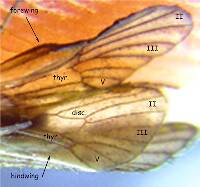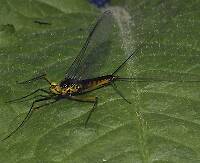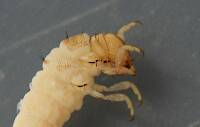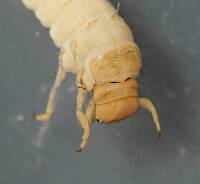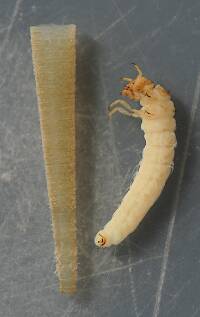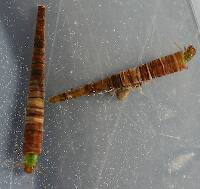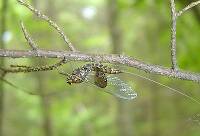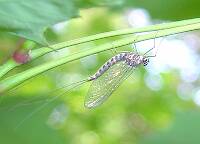
Hex Mayflies
Hexagenia limbata
The famous nocturnal Hex hatch of the Midwest (and a few other lucky locations) stirs to the surface mythically large brown trout that only touch streamers for the rest of the year.
Featured on the forum

Some characteristics from the microscope images for the tentative species id: The postero-lateral projections are found only on segment 9, not segment 8. Based on the key in Jacobus et al. (2014), it appears to key to Neoleptophlebia adoptiva or Neoleptophlebia heteronea, same as this specimen with pretty different abdominal markings. However, distinguishing between those calls for comparing the lengths of the second and third segment of the labial palp, and this one (like the other one) only seems to have two segments. So I'm stuck on them both. It's likely that the fact that they're immature nymphs stymies identification in some important way.

Troutnut is a project started in 2003 by salmonid ecologist Jason "Troutnut" Neuswanger to help anglers and
fly tyers unabashedly embrace the entomological side of the sport. Learn more about Troutnut or
support the project for an enhanced experience here.

This specimen was completely green when I collected it from among many others gathered on a midstream rock along with their nymphal shucks early in the morning. There was also a yellow one with them, which I assumed was a different species. Now that I've seen how this one started changing from green to yellow, I have to wonder if they weren't the same species and the yellow one was just older.
Troutnut on Jun 5, 2007June 5th, 2007, 2:41 pm EDT
I just want to double-check this ID, because I've got a couple on-stream pictures of these flies to add. Can anyone confirm?
Jason Neuswanger, Ph.D.
Troutnut and salmonid ecologist
Troutnut and salmonid ecologist
Taxon on Jun 5, 2007June 5th, 2007, 4:46 pm EDT
Jason-
I believe so, but am unable to key it without being able to see hind wing venation. Do you have a photo which clearly displays hind wing venation?
If I were to guess at this point, it would be Haploperla brevis. However, if you have a photo clearly showing hind wing venation, it can accurately be keyed to (at least) genus.
I believe so, but am unable to key it without being able to see hind wing venation. Do you have a photo which clearly displays hind wing venation?
If I were to guess at this point, it would be Haploperla brevis. However, if you have a photo clearly showing hind wing venation, it can accurately be keyed to (at least) genus.
GONZO on Jun 6, 2007June 6th, 2007, 9:25 am EDT
This certainly looks like Chloroperlidae to me, but I've long been curious about the species. The late May/early June emergence of this species has always been heavy in the Brodhead drainage. The fish largely ignore them when the olive morning dun hatch is in progress, but I've had some success imitating them on early June mornings after the main Drunella hatch ends. I like Roger's Haploperla brevis guess, mostly because it was on the short list of species I was considering as candidates. I'd love to know the species ID for sure, but I doubt that the pictures provide the means to take this specimen to that level.
Myersl on Apr 8, 2010April 8th, 2010, 3:36 am EDT
Judging the green color and the size of the adult, all signs indicate to me that this is most likely the genus Alloperla.
myersl
Quick Reply
Related Discussions
Topic
Replies
Last Reply
0
Jul 17, 2019
by Troutnut
by Troutnut
Re: DIY Photo-Microscope with a smart cell phone, iPod Touch, iPad (aka Smart-D-Scope)
In the Photography Board by LowBudget
In the Photography Board by LowBudget
1
Apr 1, 2014
by Entoman
by Entoman




